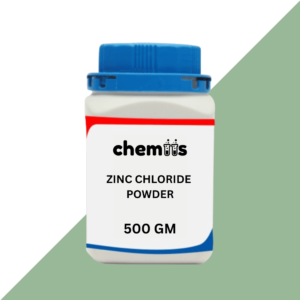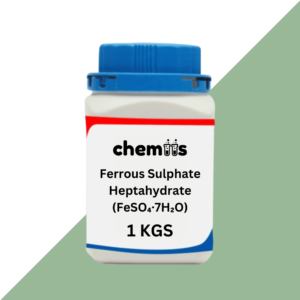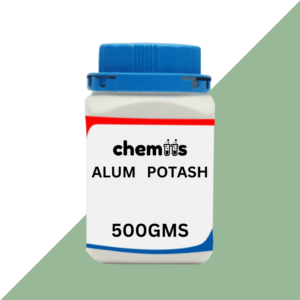Succinimide (C₄H₅NO₂) is an organic compound derived from succinic acid. It is a white, crystalline solid with a melting point of 126°C, commonly used in various chemical and industrial applications. As a key intermediate in the production of pharmaceuticals, polymers, and agricultural chemicals, succinimide is essential for multiple industries. Succinimide can be synthesized from succinic acid through dehydration and is recognized for its reactivity in organic synthesis and industrial applications.
Applications:
1. Pharmaceutical Industry:
- Intermediate for Drug Synthesis: Succinimide is widely used as an intermediate in the synthesis of pharmaceuticals, especially in the production of anticonvulsant and anti-inflammatory drugs. It is a precursor to compounds like phenytoin (an anticonvulsant) and other drugs that influence the central nervous system.
- API in Medicinal Formulations: Succinimide is used to manufacture certain active pharmaceutical ingredients (APIs). Its derivatives serve as stabilizers and binders in solid-dose formulations like tablets and capsules.
2. Polymer Production:
- Polymer Synthesis: Succinimide is employed in the production of specialty polymers and resins. It is used as a monomer or a crosslinking agent in polyamide resins, improving the thermal stability and mechanical properties of the final polymer products.
- Epoxy Resin Curing Agents: Succinimide derivatives are used as curing agents in the production of epoxy resins. These resins are used in coatings, adhesives, electrical components, and other industrial applications due to their excellent durability and chemical resistance.
3. Agrochemical Industry:
- Herbicide and Fungicide Production: Succinimide derivatives are used in the formulation of certain herbicides and fungicides. It helps enhance the effectiveness of chemical formulations in agricultural pest control, providing a more efficient means of managing crop protection.
- Pesticide Synthesis: Succinimide is also used in the production of various pesticides, improving the efficacy and stability of pesticide formulations.
4. Organic Synthesis:
- Reagent in Organic Chemistry: Succinimide is used as a reagent in organic synthesis, particularly for cyclization reactions, and to prepare a variety of compounds, such as cyclic amides and other nitrogen-containing heterocycles.
- Photographic Chemicals: Succinimide is sometimes used in the formulation of photographic chemicals, acting as a stabilizer for the photographic emulsion.
5. Electronics and Automotive Applications:
- Corrosion Inhibitors: Succinimide derivatives are used as corrosion inhibitors in various industries, including automotive and electronics. These compounds help protect metal surfaces from oxidative damage and rust formation.
- Lubricants: In the automotive industry, succinimide derivatives are added to lubricants and engine oils to improve performance, reduce friction, and prolong the lifespan of machinery components.
6. Food Industry:
- Food Additive: While less common, succinimide is sometimes used as a food additive, where it can act as a stabilizer or an intermediate in the preparation of certain food products, especially in the production of amino acids or flavoring agents.
- Flavor Enhancer: It may be employed in small amounts to enhance the flavor or texture of processed foods.
Safety Guidelines:
- Personal Protective Equipment (PPE):
- Eye Protection: Wear safety goggles to protect against eye contact. Succinimide dust or solutions may cause irritation.
- Skin Protection: Wear protective gloves, long sleeves, and suitable clothing when handling succinimide to avoid skin contact, which may cause irritation.
- Respiratory Protection: If working with large amounts of succinimide in powdered form or in areas with inadequate ventilation, use a dust mask or respirator to avoid inhaling any dust.
- Storage:
- Cool, Dry, Well-Ventilated Area: Store succinimide in a cool, dry place away from direct sunlight and sources of heat. Ensure the storage area is well-ventilated to prevent the accumulation of potentially harmful dust or vapors.
- Keep Containers Sealed: Keep containers of succinimide tightly sealed to avoid contamination and exposure to moisture, as succinimide can absorb water and degrade.
- Handling:
- Avoid Dust Formation: When handling succinimide in its powder form, minimize dust formation. Work in a controlled environment, such as a fume hood, to prevent inhalation risks.
- Spill and Leak Procedures: In case of a spill, wear protective equipment, and clean up the substance promptly. Use an inert material (such as sand) to absorb the spill, and dispose of it following local regulations. Ensure proper ventilation to avoid inhalation.
- First Aid:
- Inhalation: If succinimide dust or vapors are inhaled, move the person to fresh air immediately. If breathing difficulties persist, seek medical attention.
- Skin Contact: In case of skin contact, wash the affected area with soap and water immediately. If irritation or redness persists, seek medical attention.
- Eye Contact: In case of eye contact, flush the eyes with copious amounts of water for at least 15 minutes. If irritation persists, seek medical attention.
- Ingestion: If succinimide is ingested, do not induce vomiting. Rinse the mouth with water and seek immediate medical attention.
- Disposal:
- Chemical Waste Disposal: Dispose of succinimide according to local environmental regulations. Avoid disposal in drains, sewers, or water sources. Consult with local waste disposal authorities to ensure safe disposal.








Simran Gill (verified owner) –
Nicely organized website.
Jyoti Sharma (verified owner) –
Very responsive team.
Aarav Mehta (verified owner) –
Items exactly as ordered.
Prateek Saxena (verified owner) –
Very dependable delivery.
Bhavika Shah (verified owner) –
Great for bulk purchase.
Aarav Mehta (verified owner) –
Great for science students.
Harshit Reddy (verified owner) –
Delivered safely and quickly.
Manju Devi (verified owner) –
Arrived earlier than expected.
Amarjeet Singh (verified owner) –
Items exactly as ordered.
Bhavana Rao (verified owner) –
Amazing response time.
Isha Roy (verified owner) –
Products are exactly as described.
Ayesha Rizvi (verified owner) –
Excellent service overall.
Vipin Giri (verified owner) –
Quick and safe delivery.
Manish Chauhan (verified owner) –
Crystal clear instructions.
Simran Gill (verified owner) –
Easy to communicate with.
Simran Gill (verified owner) –
Honest and transparent.
Chirag Vora (verified owner) –
Easy to reorder.
Manju Devi (verified owner) –
Just what I needed.
Ankur Tyagi (verified owner) –
Good service.
Priya Sharma (verified owner) –
Truly professional approach.